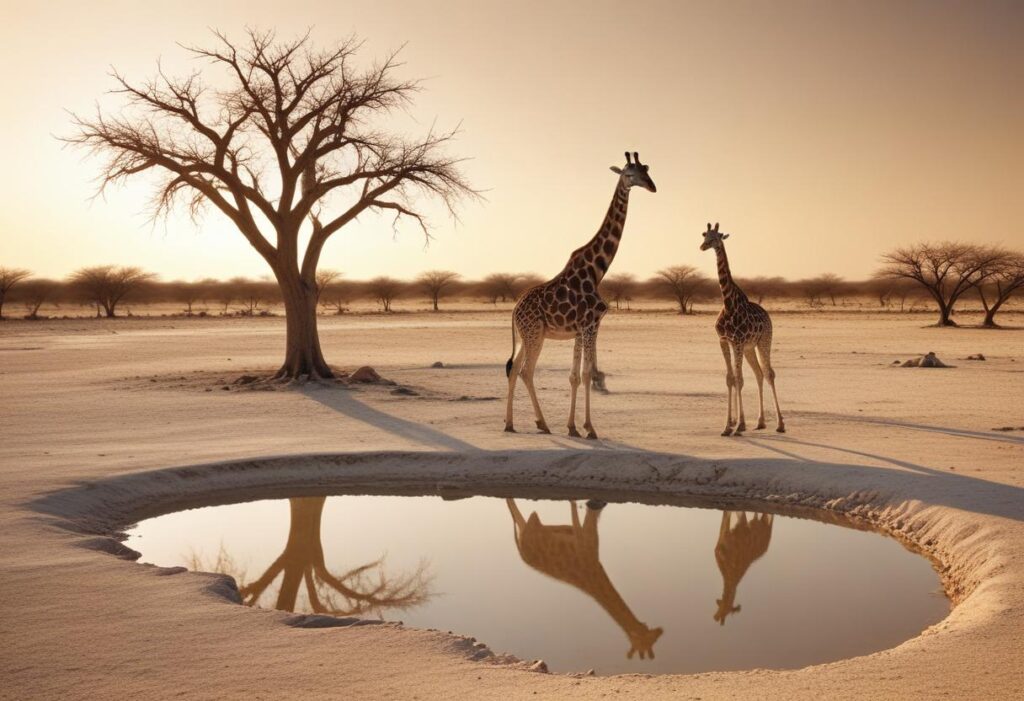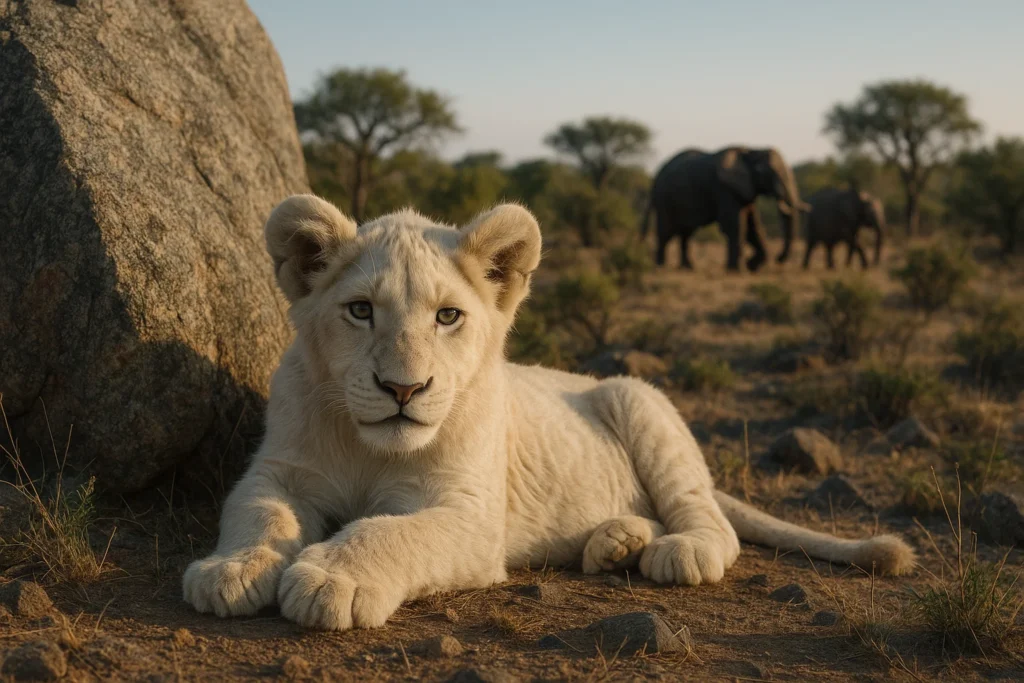Etosha National Park, one of Africa’s great wildlife sanctuaries, is a place of extremes. While the wet season transforms its plains into temporary wetlands teeming with migratory birds, it’s the long dry season—stretching from May to October—that defines both its landscape and its remarkable ecological resilience. So how does this vast ecosystem survive months with almost no rain? The answer lies in a sophisticated interplay of natural adaptations, water management, and conservation strategy.
The Dry Season Challenge
Etosha’s climate is semi-arid. Annual rainfall varies from 300–500 mm, falling mostly between January and March. For the remaining months, the land becomes parched, dusty, and sun-scorched.
Key stressors during the dry season:
- No significant rainfall for 6–8 months
- Temperatures exceeding 35°C
- Vegetation dies back, limiting food availability
- Wildlife crowds shrinking water sources
Yet, despite these harsh conditions, Etosha thrives—thanks to unique ecological dynamics and human-managed interventions.
Etosha Pan: The Park’s defining feature
At the heart of the park lies the Etosha Pan, a 120-km-long salt flat visible from space. While it’s bone-dry in the winter, it plays a crucial role in the ecosystem:
- Saline dust particles help mineralize surrounding soils and waterholes
- Seasonal flooding (in good years) supports flamingo breeding
- Creates a natural open space where predators can spot prey more easily, aiding the balance of species
How wildlife adapts to the dry months
Etosha’s fauna is uniquely adapted to cope with extreme aridity:
Elephants
- Use tusks to dig for underground water
- Can walk long distances to reach known waterholes
Springbok and Oryx
- Derive most of their moisture from succulent plants
- Reduce water loss through specialized metabolism
Predators
- Concentrate their hunting near waterholes, where prey density spikes
- Avoid overheating by being active mostly at dawn and dusk
These adaptations reduce pressure on vegetation and water, enabling survival in a fragile equilibrium.
The role of artificial waterholes
To supplement natural pans and springs, park authorities maintain a network of over 80 artificial waterholes, many of which are fed by solar-powered boreholes.
Why they matter:
- Help distribute animal traffic across the park, avoiding overgrazing
- Support species survival during years of drought
- Reduce human-wildlife conflict by keeping animals inside park boundaries
Yet, this management comes with challenges: some argue artificial waterholes may alter natural behavior, increase predator-prey pressure, and concentrate disease risk. It’s a delicate balance between intervention and letting nature run its course.
Conservation strategy: Managing scarcity
Etosha’s survival isn’t only natural—it’s also the result of decades of proactive conservation:
Zoning and Access Control
- Tourist routes are concentrated in central and southern areas, reducing impact in sensitive habitats
- Fencing and monitoring help limit poaching and livestock incursion
Research and Data Monitoring
- Studies track rainfall patterns, wildlife movements, and waterhole use
- GPS collars, camera traps, and aerial surveys help managers adapt strategies annually
Indigenous Knowledge
The park’s history also includes traditional knowledge of water locations and wildlife movement, used by both colonial-era trackers and modern conservationists.
Climate change: A new dry season threat
Longer droughts, unpredictable rainfall, and higher evaporation rates are intensifying Etosha’s dry season pressures.
- Vegetation zones are shifting, impacting grazers first
- Species like rhino and elephant are more vulnerable to water scarcity
- New conservation approaches must factor in climate resilience and cross-border conservation (Etosha lies near Angola and other drylands)
Conclusion
Etosha National Park is a masterclass in adaptation—by nature, by wildlife, and by humans. The dry season, while unforgiving, is not a crisis; it’s a cycle that the park has learned to manage and even thrive within. Through careful conservation planning, artificial water support, and respect for ecological limits, Etosha remains a resilient haven in one of Africa’s toughest landscapes.
Frequently Asked Questions (FAQs)
Over 80 waterholes are maintained year-round, many powered by solar pumps.
No—in fact, the dry months offer better sightings as wildlife gathers at predictable water sources.
Occasionally during heavy rains, it floods briefly and attracts flamingos, but it’s mostly dry.
Through rainfall gauges, satellite data, wildlife tracking, and ecological field studies.






